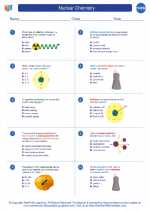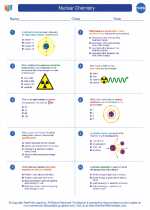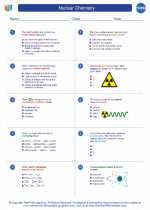Mixtures
A mixture is a combination of two or more substances that are not chemically combined. The substances in a mixture retain their individual properties and can be separated using physical methods. Mixtures are an essential part of our daily lives and can be found everywhere, from the air we breathe to the food we eat.
Types of Mixtures
There are two main types of mixtures:
- Heterogeneous Mixtures: In a heterogeneous mixture, the components are not uniformly distributed and can be seen as separate phases. Examples include a mixture of oil and water, or a salad with different vegetables.
- Homogeneous Mixtures (Solutions): In a homogeneous mixture, the components are uniformly distributed and the mixture has a single phase. Examples include salt dissolved in water or air.
Separation of Mixtures
There are several methods to separate the components of a mixture, including:
- Filtration: Used to separate a solid from a liquid in a heterogeneous mixture.
- Evaporation: Used to separate a solute from a solvent in a homogeneous mixture.
- Distillation: Used to separate components of a homogeneous mixture based on differences in their boiling points.
- Chromatography: Used to separate the components of a mixture based on their solubility and affinity for a stationary phase.
Properties of Mixtures
Some important properties of mixtures include:
- Variable Composition: The composition of a mixture can vary, and the proportions of the components can be adjusted.
- No Chemical Bonding: The components of a mixture do not undergo chemical reactions with each other.
- Physical Properties: The properties of a mixture are a combination of the properties of its components.
Study Tips
When studying mixtures, it's important to:
- Understand the difference between heterogeneous and homogeneous mixtures.
- Learn the various methods of separating mixtures and their applications.
- Be familiar with the properties and characteristics of mixtures.
- Practice solving problems related to mixtures and their separations.
Understanding mixtures is fundamental to understanding many aspects of chemistry, and it's important to grasp the concepts thoroughly to build a strong foundation for further studies in the subject.
.◂Chemistry Worksheets and Study Guides High School. Nuclear Chemistry
Worksheet/Answer key Nuclear Chemistry
Nuclear Chemistry  Worksheet/Answer key
Worksheet/Answer key Nuclear Chemistry
Nuclear Chemistry  Worksheet/Answer key
Worksheet/Answer key Nuclear Chemistry
Nuclear Chemistry 

 Worksheet/Answer key
Worksheet/Answer key
 Worksheet/Answer key
Worksheet/Answer key

The resources above cover the following skills:
Concepts of Physical Science (SB1, SB2, SB3, SB4)
The student demonstrates an understanding of the interactions between matter and energy and the effects of these interactions on systems by researching applications of nuclear reactions in which a small amount of matter is converted directly into a huge amount of energy (i.e., E=MC2). (L)